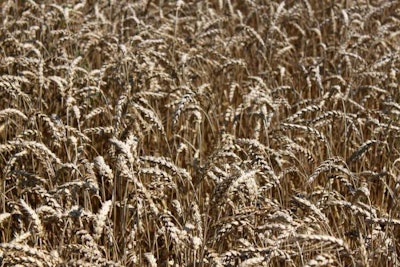
It looks like we are going to have a bumper crop of cereals this summer. Every time Mother Nature bestows upon us an unusual bounty of cereals, something is different. So, what happens when yield per hectare (or acre) increases because the conditions were just right? The grain composition changes to take advantage of what is most precious: energy. So, in bumper crop years, starch content increases, whereas protein levels drop.
I was just informed of such a situation regarding an overabundance of hard wheat at super low prices. Now, hard wheat is seldom available for animal feeding, but when it overflows the storage capacity of the human food industries, growers are looking to animal producers to unload their surplus. As it appears, this particular case revealed a markedly lower protein level.
In bumper crop years, starch content increases, whereas protein levels drop.
First, one must consider adjusting the amino acids in formulation matrices, not proportionally to protein, but according to existing regression prediction equations that take into account the fact that not all protein fractions in cereals change at similar rates. In fact, storage proteins are reduced to a greater extent compared to structural proteins; and, these two groups have distinct amino acid profiles, hence the problem when one adjust amino acids proportionally to protein levels alone.
Second, it is very probable that the non-starch polysaccharide fraction in cereals has increased (or decreased). To this end, it is best to discuss this with your enzyme suppliers and send a sample or two for analysis. You only need to know the levels of arabinoxylans and beta-glucans, and your nutritionist will decide whether or not enzymes are worth using, increasing or removing from your formulas. It is that simple!
Third, if starch levels are high, then again, use the right prediction equations and adjust energy levels. It is assumed that you have already tested the wheat or barley for major nutrients, so you should have all it takes to work the mathematics. If not, your nutritionist will let you know which laboratory analyses are required.
All these apply if you have a single source of cereals; if not, then you should keep sampling and averaging, while you keep reformulating trying to achieve the golden medium. At least, this is one of the advised methods. Other, less elaborate but more costly methods do exist.
















